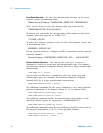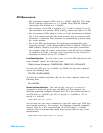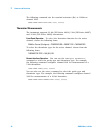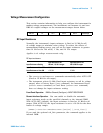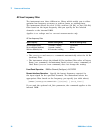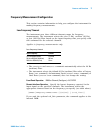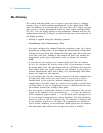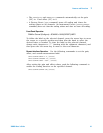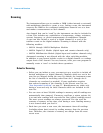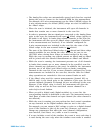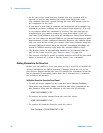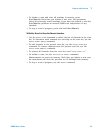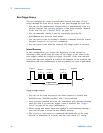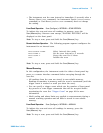40 34980A User’s Guide
2 Features and Functions
Mx+B Scaling
The scaling function allows you to apply a gain and offset to readings
during a scan or while making measurements in the stand-alone DMM
mode. In addition to setting the gain (“M”) and offset (“B”) values, you can
also specify a custom measurement label for your scaled readings (RPM,
PSI, etc.). You can apply scaling to any multiplexer channels and for any
measurement function. Scaling is not allowed with any of the channels on
the digital modules.
• Scaling is applied using the following equation:
Scaled Reading = (Gain x Measurement) + Offset
• You must configure the channel (function, transducer type, etc.) before
applying any scaling values. If you change the measurement configuration,
scaling is turned off on that channel and the gain and offset values are
reset (M=1 and B=0). Scaling is also turned off when you change the
temperature probe type, temperature units, or disable the internal
DMM.
• If you plan to use scaling on a channel which will also use alarms,
be sure to configure the scaling values first. If you attempt to assign
the alarm limits first, the instrument will turn off alarms and clear the
limit values when you enable scaling on that channel. If you specify a
custom measurement label with scaling, it is automatically used when
alarms are logged on that channel.
• If you redefine the scan list, scaling is turned off on those channels but
the gain and offset values are not cleared. If you decide to add a
channel back to the scan list (without changing the function), the
original gain and offset values are restored and scaling is turned back
on. This makes it easy to temporarily remove a channel from the scan
list without entering the scaling values again.
• You can specify a custom label with up to three characters. You can use
letters (A-Z), numbers (0- 9), an underscore ( _ ), or the “#” character
which displays a degree symbol ( ° ) on the front panel (displayed as a
“#” in an output string from the remote interface). The first character
must be a letter or the “#” character (the “#” character is allowed only
as the leftmost character in the label). The remaining two characters
can be letters, numbers, or an underscore. Blank spaces are not allowed.
• The maximum value allowed for the gain and offset is ±1E+15.



